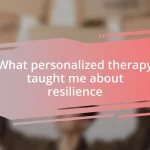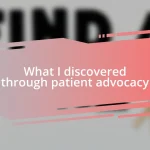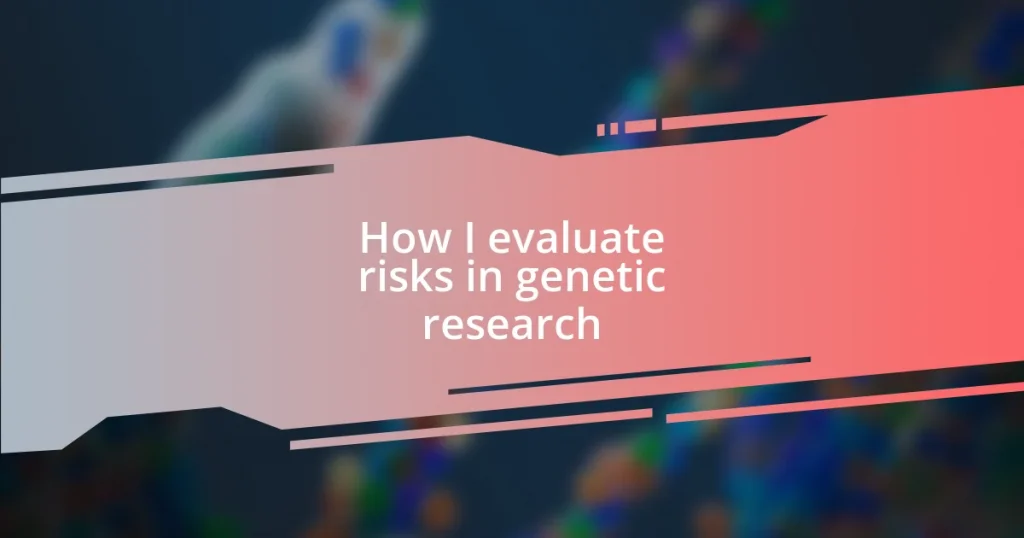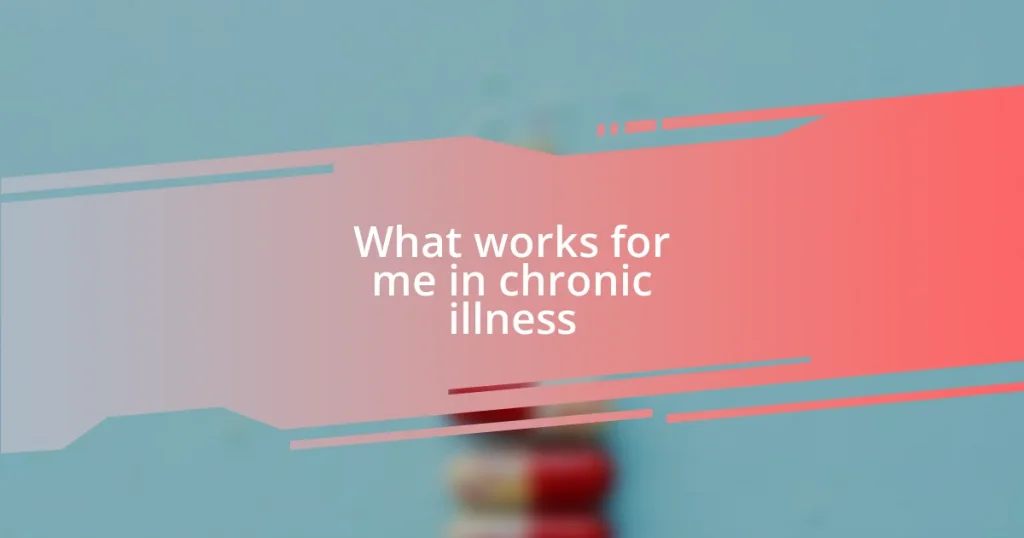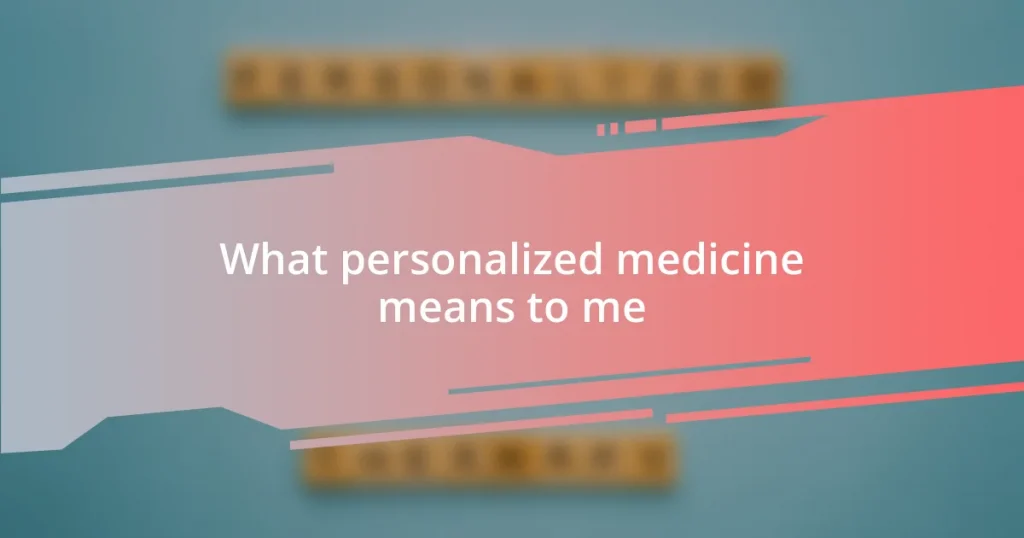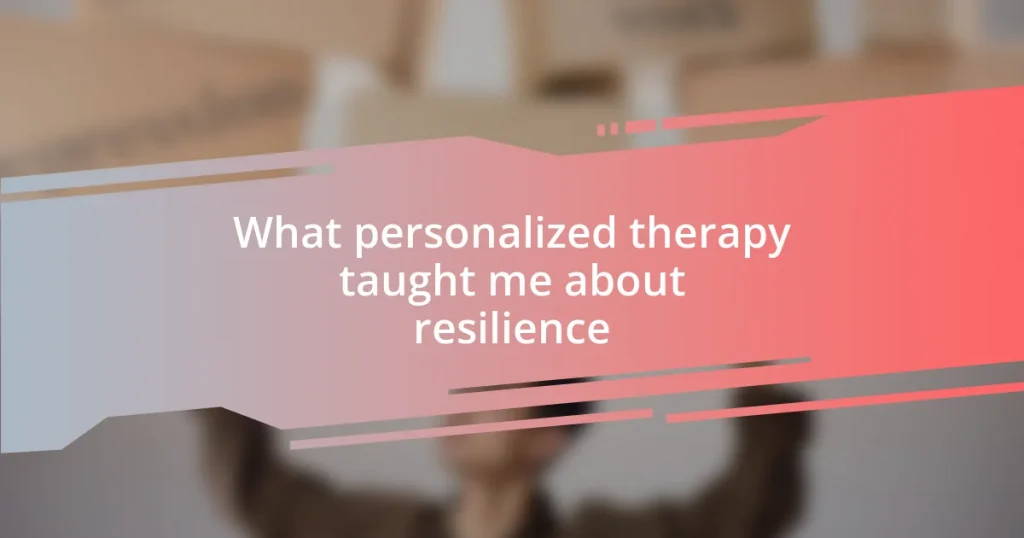Key takeaways:
- The ethical implications of genetic research require careful consideration to respect participants’ identities and safeguard their dignity, emphasizing the importance of informed consent and transparency.
- Implementing effective risk management strategies, such as proactive communication and continuous evaluation, fosters trust and engagement among participants, addressing their concerns and enhancing study integrity.
- Monitoring and reviewing risks is essential; creating a feedback loop within research teams and maintaining open lines of communication can help identify emerging issues and adapt strategies as needed.
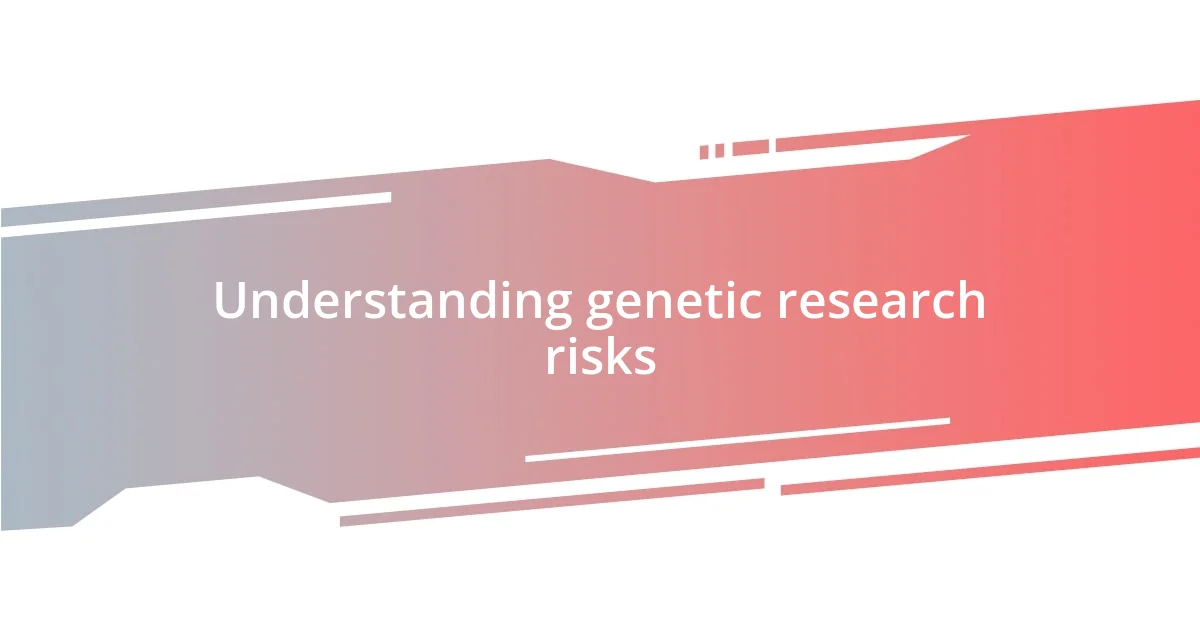
Understanding genetic research risks
When I first delved into genetic research, I was struck by the sheer complexity of the risks involved. Many people think of genetic research as simply analyzing DNA, but the implications of those findings can be profound and far-reaching. For instance, what happens if a study inadvertently reveals sensitive information about a participant’s health that they weren’t prepared to face?
As I navigated this field, I often pondered the ethical dilemmas surrounding genetic data. The potential for misuse or misinterpretation of genetic information can weigh heavily. For example, during a project on hereditary diseases, I approached participants with caution, aware that their genetic predispositions could impact their life insurance or employment opportunities. Have you ever considered how such revelations could change someone’s life in an instant?
The emotional weight of these risks is not easily overlooked. I remember conducting a focus group where participants shared their fears about genetic discrimination, and it truly highlighted the human side of research. It reinforced my belief that we must handle genetic information with care, ensuring that participants feel safe and respected. How can we strike a balance between advancing science and safeguarding individual rights?
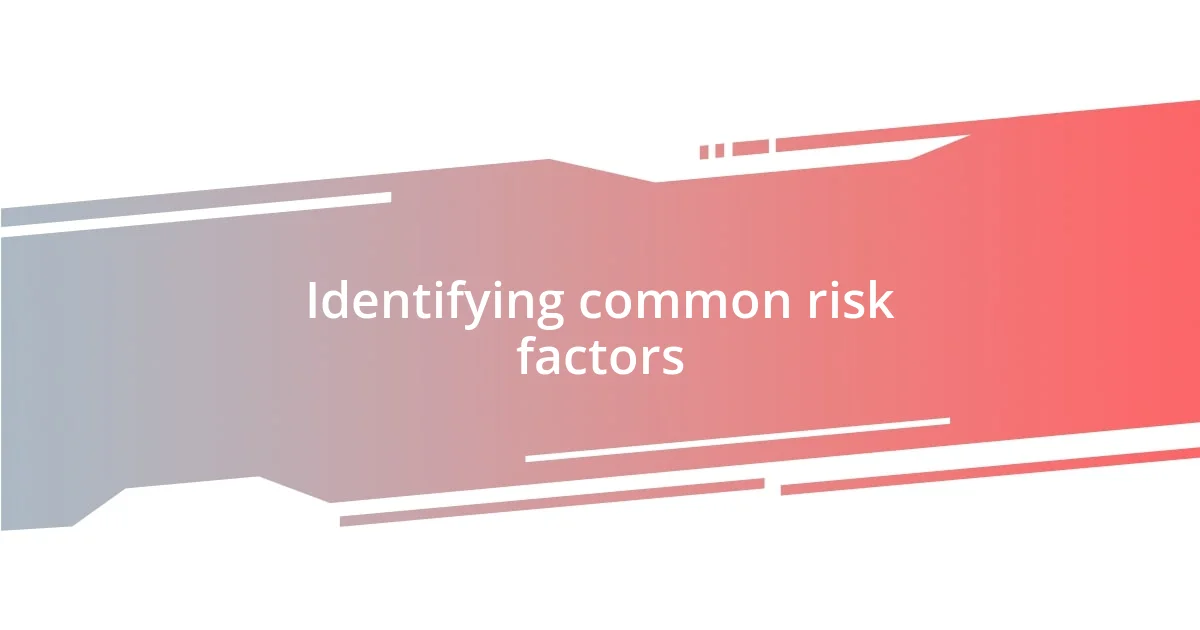
Identifying common risk factors
Identifying the common risk factors in genetic research has been an eye-opening experience for me. As I assessed various studies, I found that certain elements consistently posed challenges. It’s fascinating how risk factors can vary greatly from one research project to another, often hinging on the research context, the population involved, and the type of data collected. For instance, while working on a study focused on genetic mutations in a specific demographic, I realized that the cultural attitudes towards genetic testing played a huge role in participant engagement.
Here are some of the common risk factors I identified during my evaluations:
- Informed consent challenges: Participants may not fully grasp the implications of genetic testing.
- Privacy concerns: The potential for unauthorized access to sensitive genetic data can discourage participation.
- Disclosure of incidental findings: Unexpected results can emotionally burden participants and families.
- Cultural sensitivities: Different groups may have varying beliefs about genetics, impacting participation.
- Stigmatization: There’s always a risk of individuals facing prejudice based on genetic information.
One particular instance stands out where a participant shared with me their intense fear of being ostracized in their community, should their genetic predisposition to a certain disease become known. It was a powerful reminder that behind the data, there are real lives, feelings, and potential consequences. As I continue to navigate this complex landscape, I find that understanding these factors is crucial in fostering an environment where participants feel secure and understood.
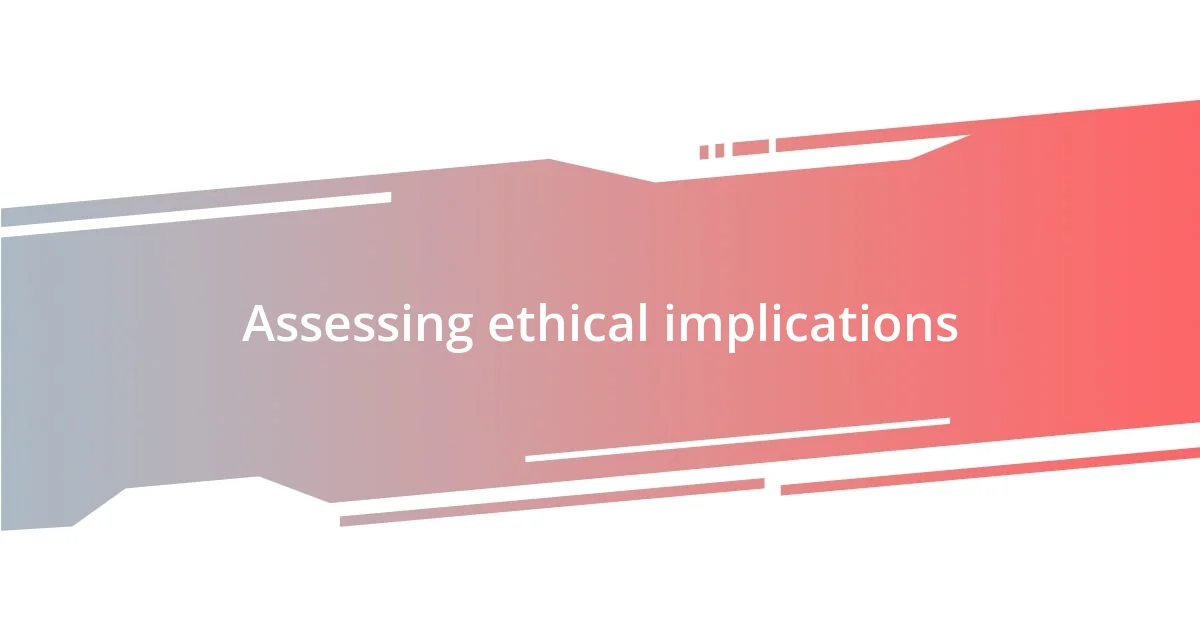
Assessing ethical implications
Assessing the ethical implications of genetic research is not just a regulatory checkbox; it’s about respecting individuals and their stories. I recall an instance when I was reviewing a study proposal that involved collecting genetic data from a vulnerable population. My initial excitement was tempered by the dread of potential fallout if the findings were mishandled. The ethical landscape in genetic research demands a nuanced understanding of how participants’ identities could be affected, making it imperative to approach each project with a commitment to their dignity and well-being.
Moreover, I’ve learned that transparency plays a vital role in mitigating ethical concerns. When I worked on a collaborative project with a community health organization, we prioritized open communication with participants about how their data would be used. This approach fostered trust, encouraging individuals to engage more fully. Have you ever noticed how a simple conversation can shift the dynamics of trust? The participants responded positively, expressing relief that their concerns were taken seriously, leading to a more ethical research environment that put their needs first.
I also find that ethical implications extend to the broader societal impact of genetic research. It’s essential to consider how findings might influence public perception and policy. For example, during a community meeting aimed at discussing the implications of genetic research findings, participants expressed fears about genetic determinism— the belief that genes alone dictate one’s destiny. These conversations underscored the responsibility researchers bear in ensuring that their work doesn’t inadvertently propagate misinformation or fear.
| Ethical Consideration | Example |
|---|---|
| Informed Consent | A participant struggles to understand the implications of their genetic testing results. |
| Privacy Concerns | A researcher worries about unauthorized access to sensitive genetic information from a database. |
| Potential for Discrimination | A participant fears job loss due to their genetic predisposition being revealed. |
| Transparency | Open discussions help alleviate community fears around research use of genetic data. |
| Public Perception | Misinformation in media could lead to panic about genetic findings. |
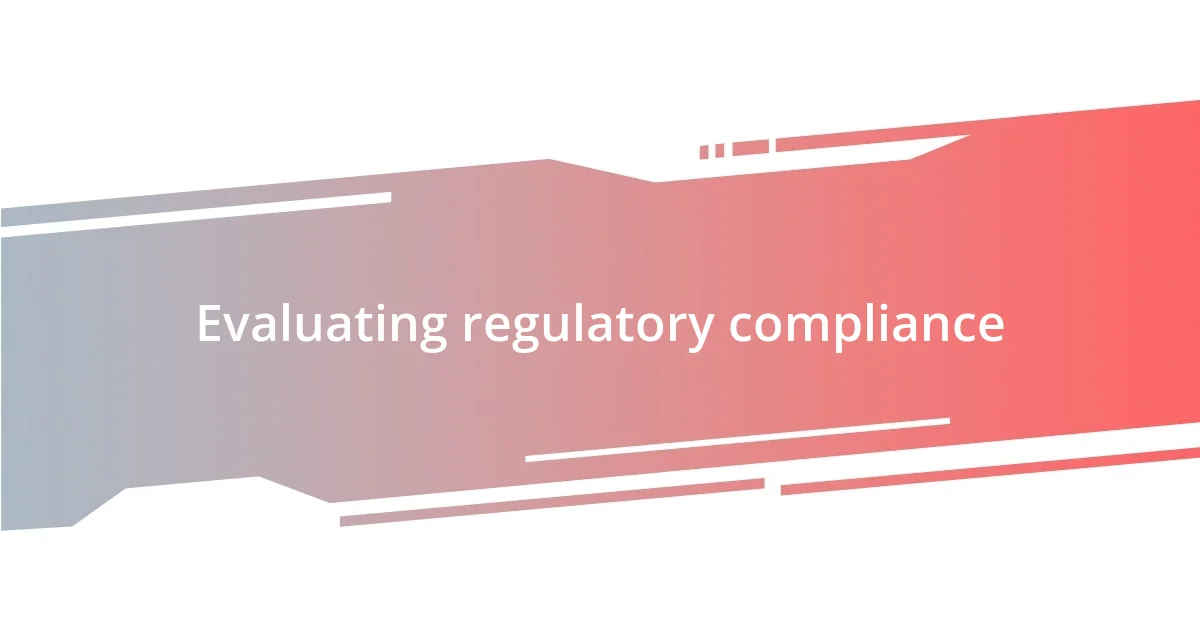
Evaluating regulatory compliance
Evaluating regulatory compliance in genetic research is like navigating a complex maze—each turn reveals new rules and guidelines that must be followed. I vividly recall a moment during an audit when I discovered that a research team had inadvertently overlooked a critical change in federal regulations. It struck me how easily this could have derailed their entire project. This experience reinforced my belief that keeping abreast of regulatory updates is not just a box-ticking exercise; it’s integral to the integrity and success of any research endeavor.
I always approach compliance with a combination of diligence and curiosity. It’s essential to assess whether protocols align not only with legal standards but also with ethical practices. For instance, while reviewing a consent form, I found vague language that could confuse participants. I asked myself, “How can we expect informed consent if the participants don’t truly understand what they’re agreeing to?” It made me realize that regulatory adherence is as much about clarity and transparency as it is about following the law.
Moreover, I’ve learned that engaging with regulatory bodies can foster a sense of collaboration rather than fear. In one of my projects, I reached out to a regulatory agency early in the research process. Their insights not only clarified some compliance concerns but also opened doors for feedback that improved our study design. Have you ever considered that regulatory agencies can be partners rather than obstacles? This mindset shift has proven invaluable in ensuring that compliance enhances, rather than hinders, our scientific work.
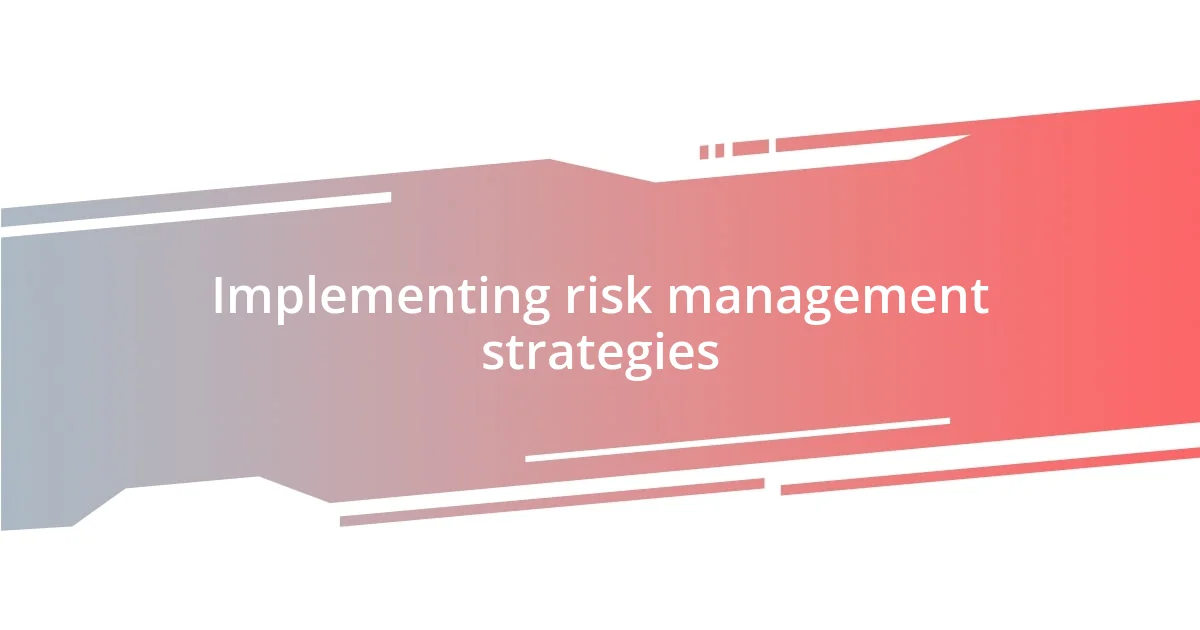
Implementing risk management strategies
Implementing risk management strategies in genetic research is crucial to safeguard both participants and the integrity of the study. I vividly remember a project where we identified potential risks associated with data storage. By establishing multiple layers of security and consistently reviewing access controls, we not only protected sensitive information but also put participants at ease. Have you ever noticed how protective measures can foster a sense of trust? I certainly felt the reassurance from participants when they understood the precautions we took on their behalf.
When I think about risk management, I can’t help but reflect on the importance of proactive communication. In one study, we encountered unexpected pushback from a community due to misconceptions about our research. Rather than waiting passively, I took the initiative to host a series of informational sessions. It was incredible to see how addressing their concerns directly led to a shift in perception. Have you ever experienced how sharing knowledge can dissolve tensions? For me, that was a powerful reminder that open dialogue is a cornerstone of effective risk management.
Moreover, I find that risk management strategies should include continuous evaluation and adaptation. During a longitudinal study, we regularly assessed both environmental and ethical risks, which ultimately led us to refine our data collection methods in real-time. This adaptability proved essential as we navigated unforeseen challenges. I often ask myself, “How can we ensure our research remains relevant and responsible?” I believe the answer lies in being willing to pivot and respond to the evolving landscape of genetic research, allowing us to maintain not just compliance, but a commitment to ethical excellence.
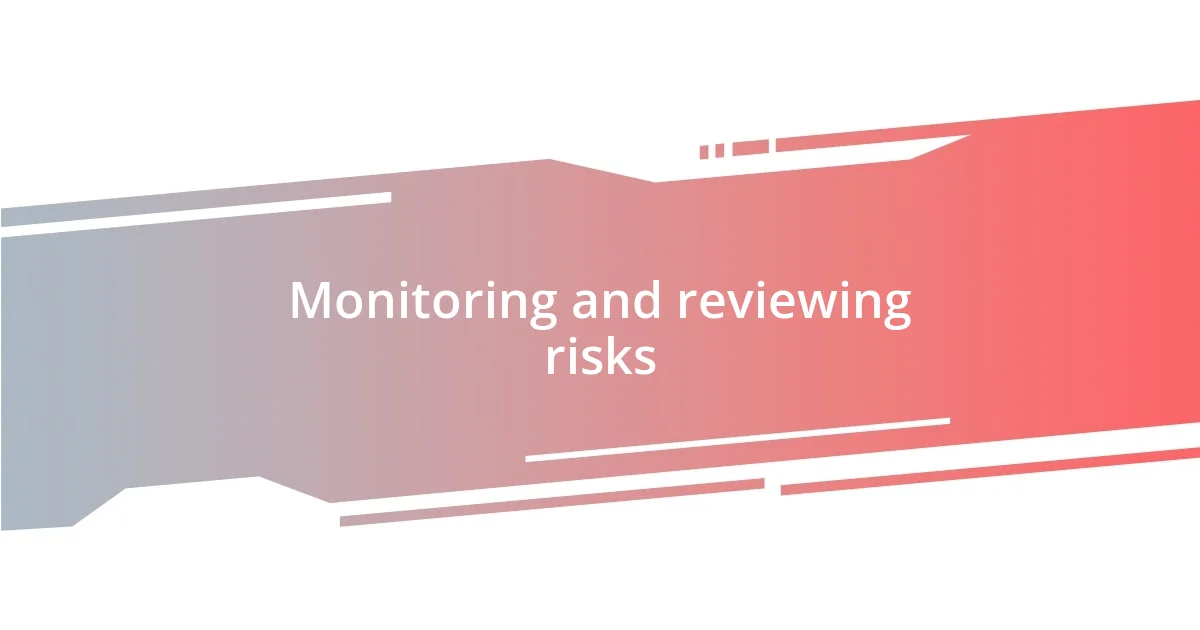
Monitoring and reviewing risks
Monitoring risks in genetic research requires an ongoing commitment to vigilance and adaptation. I’ve often found myself revisiting risk assessments to ensure they are still relevant. During a clinical trial, we recognized that a change in participant demographics could shift potential risks. I remember thinking, “How can I anticipate issues not just for the current group but for future participants as well?” This foresight became a pivotal part of how we sculpted the remainder of our project.
I’ve experienced firsthand the importance of creating a feedback loop within research teams. In one of my previous projects, we instituted regular check-ins where team members could voice concerns about emerging risks. I didn’t expect the depth of insights that would emerge from these discussions. It made me ponder—how often do we invite team input on something as crucial as risk? This practice not only identified new risks but also fostered a sense of collective responsibility, reinforcing our commitment to participant safety.
Lastly, documenting and reviewing data consistently is crucial in my approach to risk monitoring. I recall a time when an unexpected pattern emerged in our data set that alerted us to a possible adverse effect. I couldn’t help but feel a rush of urgency—we had to act quickly. A simple review mechanism I implemented allowed us to adjust protocols almost instantly. I often wonder how many projects falter simply because the nuances in data go unnoticed. In my experience, fostering a culture of vigilance mitigates those risks, ensuring that we always stay a step ahead.
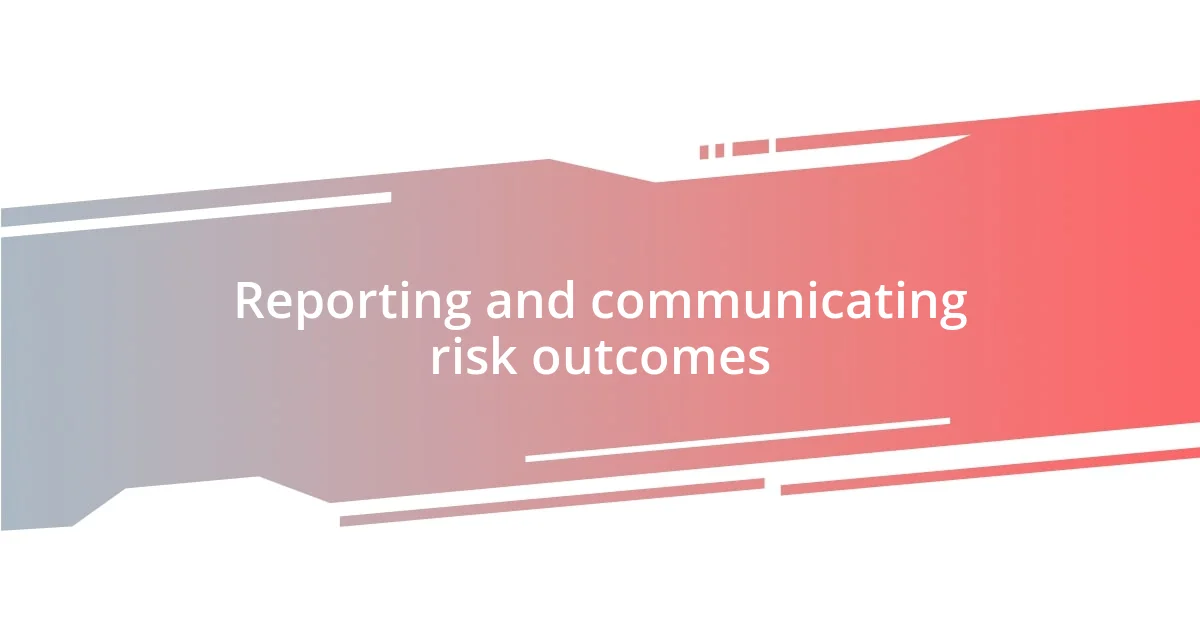
Reporting and communicating risk outcomes
Communicating risk outcomes effectively in genetic research requires transparency and clarity. I once led a project where we discovered potential genetic predispositions that could impact participants’ health. I vividly recall the moment we prepared our findings for dissemination; it felt crucial to present the information in a way that participants would understand their implications. How do you convey complex scientific data without overwhelming people? I found that using relatable analogies and straightforward language made a significant difference in how the participants received and processed the information.
During one of my presentations, I saw some faces fill with concern as they grappled with the results. It was a poignant moment that reminded me of the emotional weight our research can carry. To address their concerns, I emphasized the steps we would take moving forward—like ongoing monitoring and follow-up consultations. I asked questions to engage them in a discussion: “What are your thoughts on this finding?” Inviting dialogue not only eased their anxieties but also created a collaborative atmosphere where they felt heard and valued.
Moreover, follow-up is critical after initial communications. In my experience, I’ve noticed that reaching out to participants weeks or months later can reinforce trust. After sharing those results, I organized follow-up sessions to review their questions and share updates on the research’s progress. I often ask myself, “Have we done enough to empower our participants with information?” Ensuring they felt supported long after our initial findings was essential; it transformed a potentially distressing experience into one where they felt informed and engaged with their own health narratives.


